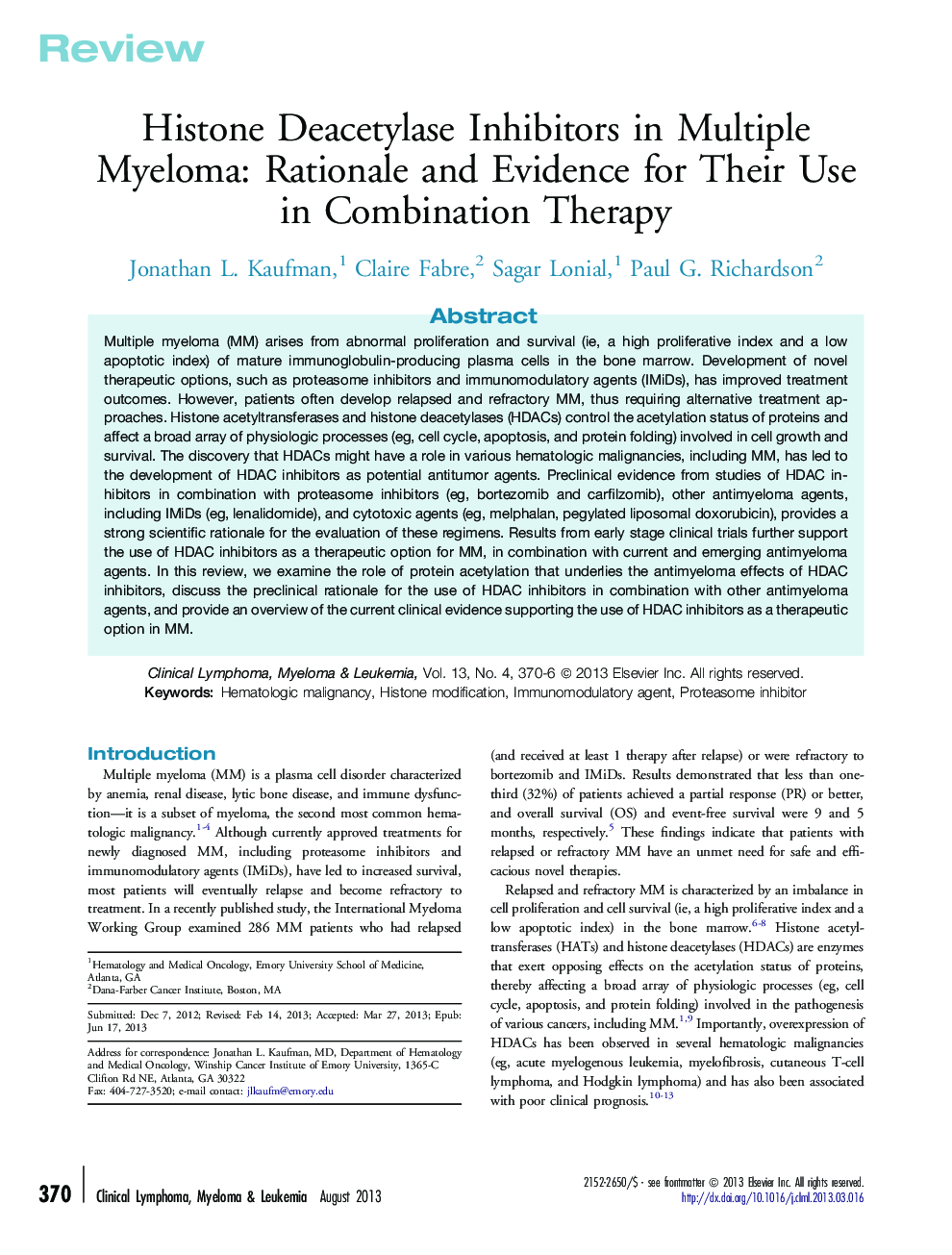| Article ID | Journal | Published Year | Pages | File Type |
|---|---|---|---|---|
| 2754981 | Clinical Lymphoma Myeloma and Leukemia | 2013 | 7 Pages |
Multiple myeloma (MM) arises from abnormal proliferation and survival (ie, a high proliferative index and a low apoptotic index) of mature immunoglobulin-producing plasma cells in the bone marrow. Development of novel therapeutic options, such as proteasome inhibitors and immunomodulatory agents (IMiDs), has improved treatment outcomes. However, patients often develop relapsed and refractory MM, thus requiring alternative treatment approaches. Histone acetyltransferases and histone deacetylases (HDACs) control the acetylation status of proteins and affect a broad array of physiologic processes (eg, cell cycle, apoptosis, and protein folding) involved in cell growth and survival. The discovery that HDACs might have a role in various hematologic malignancies, including MM, has led to the development of HDAC inhibitors as potential antitumor agents. Preclinical evidence from studies of HDAC inhibitors in combination with proteasome inhibitors (eg, bortezomib and carfilzomib), other antimyeloma agents, including IMiDs (eg, lenalidomide), and cytotoxic agents (eg, melphalan, pegylated liposomal doxorubicin), provides a strong scientific rationale for the evaluation of these regimens. Results from early stage clinical trials further support the use of HDAC inhibitors as a therapeutic option for MM, in combination with current and emerging antimyeloma agents. In this review, we examine the role of protein acetylation that underlies the antimyeloma effects of HDAC inhibitors, discuss the preclinical rationale for the use of HDAC inhibitors in combination with other antimyeloma agents, and provide an overview of the current clinical evidence supporting the use of HDAC inhibitors as a therapeutic option in MM.
